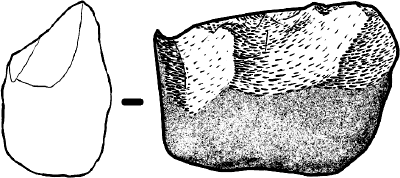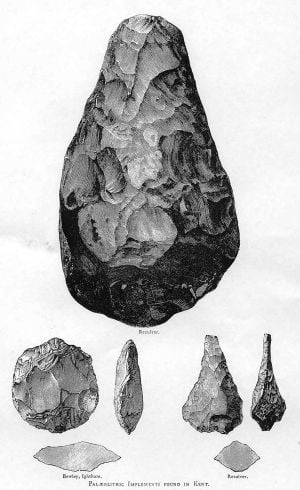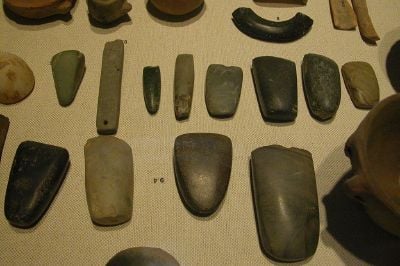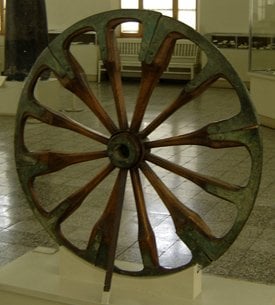Technology

Technology is a broad concept that deals with a species' usage and knowledge of tools and crafts, and how it affects a species' ability to control and adapt to its environment. In human society, it is a consequence of science and engineering, although several technological advances predate the two concepts. A strict definition of "technology" is elusive: It can refer to material objects of use to humanity, such as machines, hardware or utensils, but can also encompass broader themes, including systems, methods of organization, and techniques. The term can either be applied generally or to specific areas: examples include "construction technology," "medical technology," or "state-of-the-art technology."
Technology has affected society and its surroundings in a number of ways. In many societies, technology has helped develop more advanced economies (including today's global economy) and has allowed the rise of a leisure class. Many technological processes produce unwanted by-products, known as pollution, and deplete natural resources, to the detriment of the Earth and its environment. Various implementations of technology influence the values of a society and new technology often raises new ethical questions. Examples include the rise of the notion of efficiency in terms of human productivity, a term originally applied only to machines, and the challenge of traditional norms.
Definition and usage
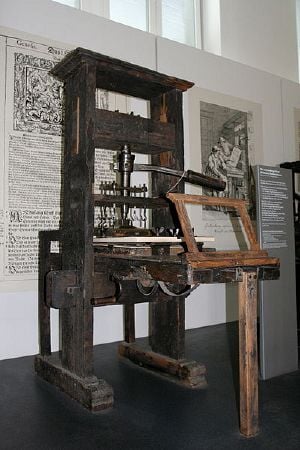
Technology has its origins in the Greek "technologia," "τεχνολογία"—"techne," "τέχνη" ("craft") and "logia," "λογία" ("saying").[1] In general, technology is the relationship that society has with its tools and crafts, and to what extent society can control its environment. The Merriam-Webster dictionary offers a definition of the term: "the practical application of knowledge especially in a particular area" and "a capability given by the practical application of knowledge".[2]
Ursula Franklin, in her 1989 "Real World of Technology" lecture, gave another definition of the concept; it is "practice, the way we do things around here".[3] The term is often used to imply a specific field of technology, or to refer to high technology or just consumer electronics, rather than technology as a whole. Bernard Stiegler, in Technics and Time, 1, defines technology in two ways: as "the pursuit of life by means other than life," and as "organized inorganic matter."[4]
Technology can be most broadly defined as the entities, both material and immaterial, created by the application of mental and physical effort in order to achieve some value. In this usage, technology refers to tools and machines that may be used to solve real-world problems. It is a far-reaching term that may include simple tools, such as a crowbar or wooden spoon, or more complex machines, such as a space station or particle accelerator. Tools and machines need not be material; virtual technology, such as computer software and business methods, fall under this definition of technology.
The word "technology" can also be used to refer to a collection of techniques. In this context, it is the current state of humanity's knowledge of how to combine resources to produce desired products, to solve problems, fulfill needs, or satisfy wants; it includes technical methods, skills, processes, techniques, tools and raw materials. When combined with another term, such as "medical technology" or "space technology," it refers to the state of the respective field's knowledge and tools. "State-of-the-art technology" refers to the high technology available to humanity in any field.
Technology can be viewed as an activity that forms or changes culture. Additionally, technology is the application of math, science, and the arts for the benefit of life as it is known. A modern example is the rise of communication technology, which has lessened barriers to human interaction and, as a result, has helped spawn new subcultures; the rise of cyberculture has, at its basis, the development of the Internet and the computer. Not all technology enhances culture in a creative way; technology can also help facilitate political oppression and war via tools such as guns. As a cultural activity, technology predates both science and engineering, each of which formalize some aspects of technological endeavor.
Science, engineering and technology
The distinction between science, engineering, and technology is not always clear. Science is the reasoned investigation or study of phenomena, aimed at discovering enduring principles among elements of the phenomenal world by employing formal techniques such as the scientific method. Technologies are not usually exclusively products of science, because they have to satisfy requirements such as utility, usability and safety.
Engineering is the goal-oriented process of designing and making tools and systems to exploit natural phenomena for practical human means, often (but not always) using results and techniques from science. The development of technology may draw upon many fields of knowledge, including scientific, engineering, mathematical, linguistic, and historical knowledge, to achieve some practical result.
Technology is often a consequence of science and engineering — although technology as a human activity precedes the two fields. For example, science might study the flow of electrons in electrical conductors, by using already-existing tools and knowledge. This new-found knowledge may then be used by engineers to create new tools and machines, such as semiconductors, computers, and other forms of advanced technology. In this sense, scientists and engineers may both be considered technologists.
Role in human history
The human race's use of technology began with the conversion of natural resources into simple tools. The prehistorical discovery of the ability to control fire increased the available sources of food and the invention of the wheel helped humans in traveling in and controlling their environment. Recent technological developments, including the printing press, the telephone, and the Internet, have lessened physical barriers to communication and allowed humans to interact on a global scale. However, not all technology has been used for peaceful purposes; the development of weapons of ever-increasing destructive power has progressed throughout history, from clubs to nuclear weapons.
Paleolithic (2.5 million – 10,000 B.C.E.)
The use of tools by early humans was partly a process of discovery, partly of evolution. Early humans evolved from a race of foraging hominids which were already bipedal, with a smaller brain than that of modern humans.[5] Tool use remained relatively unchanged for most of early human history, but approximately 50,000 years ago, a complex set of behaviors and tool use emerged, believed by many archaeologists to be connected to the emergence of fully-modern language.[6]
Stone tools
Human ancestors have been using stone and other tools since long before the emergence of Homo sapiens approximately 200,000 years ago. The earliest methods of stone tool making, known as the Oldowan "industry," date back to at least 2.3 million years ago,[7] with the earliest direct evidence of tool usage found in Ethiopia within the Great Rift Valley, dating back to 2.5 million years ago.[8] This era of stone tool use is called the Paleolithic, or "Old stone age," and spans all of human history up to the development of agriculture approximately 12,000 years ago.
To make a stone tool, a "core" of hard stone with specific flaking properties (such as flint) was struck with a hammerstone. This flaking produced a sharp edge on the core stone as well as on the flakes, either of which could be used as tools, primarily in the form of choppers or scrapers. These tools greatly aided the early humans in their hunter-gatherer lifestyle to perform a variety of tasks including butchering carcasses (and breaking bones to get at the marrow); chopping wood; cracking open nuts; skinning an animal for its hide; and even forming other tools out of softer materials such as bone and wood.[9]
The earliest stone tools were crude, being little more than a fractured rock. In the Acheulian era, beginning approximately 1.65 million years ago, methods of working these stone into specific shapes, such as hand axes emerged. The Middle Paleolithic, approximately 300,000 years ago, saw the introduction of the prepared-core technique, where multiple blades could be rapidly formed from a single core stone. The Upper Paleolithic, beginning approximately 40,000 years ago, saw the introduction of pressure flaking, where a wood, bone, or antler punch could be used to shape a stone very finely.[10]
Fire
The discovery and utilization of fire, a simple energy source with many profound uses, was a turning point in the technological evolution of humankind.[11] The exact date of its discovery is not known; evidence of burnt animal bones at the Cradle of Humankind suggests that the domestication of fire occurred before 1,000,000 B.C.E.;[12] scholarly consensus indicates that Homo erectus had controlled fire by between 500,000 B.C.E. and 400,000 B.C.E.[13] Fire, fueled with wood and charcoal, allowed early humans to cook their food to increase its digestibility, improving its nutrient value and broadening the number of foods that could be eaten.
Clothing and shelter
Other technological advances made during the Paleolithic era were clothing and shelter; the adoption of both technologies cannot be dated exactly, but they were a key to humanity's progress. As the Paleolithic era progressed, dwellings became more sophisticated and more elaborate; as early as 380,000 B.C.E., humans were constructing temporary wood huts.[14] Clothing, adapted from the fur and hides of hunted animals, helped humanity expand into colder regions; humans began to migrate out of Africa by 200,000 B.C.E. and into other continents, such as Eurasia.[15]
Humans began to work bones, antler, and hides, as evidenced by burins and racloirs produced during this period.
Neolithic through Classical Antiquity (10,000 B.C.E. – 300 C.E.)
Man's technological ascent began in earnest in what is known as the Neolithic period ("New stone age"). The invention of polished stone axes was a major advance because it allowed forest clearance on a large scale to create farms. The discovery of agriculture allowed for the feeding of larger populations, and the transition to a sedentist lifestyle increased the number of children that could be simultaneously raised, as young children no longer needed to be carried, as was the case with the nomadic lifestyle. Additionally, children could contribute labor to the raising of crops more readily than they could to the hunter-gatherer lifestyle.[16]
With this increase in population and availability of labor came an increase in labor specialization.[17] What triggered the progression from early Neolithic villages to the first cities, such as Uruk, and the first civilizations, such as Sumer, is not specifically known; however, the emergence of increasingly hierarchical social structures, the specialization of labor, trade and war amongst adjacent cultures, and the need for collective action to overcome environmental challenges, such as the building of dikes and reservoirs, are all thought to have played a role.[18]
Metal tools
Continuing improvements led to the furnace and bellows and provided the ability to smelt and forge native metals (naturally occurring in relatively pure form). Gold, copper, silver, and lead, were such early metals. The advantages of copper tools over stone, bone, and wooden tools were quickly apparent to early humans, and native copper was probably used from near the beginning of Neolithic times (about 8000 B.C.E.). Native copper does not naturally occur in large amounts, but copper ores are quite common and some of them produce metal easily when burned in wood or charcoal fires. Eventually, the working of metals led to the discovery of alloys such as bronze and brass (about 4000 B.C.E.). The first uses of iron alloys such as steel dates to around 1400 B.C.E.
Energy and Transport
Meanwhile, humans were learning to harness other forms of energy. The earliest known use of wind power is the sailboat. The earliest record of a ship under sail is shown on an Egyptian pot dating back to 3200 B.C.E. From prehistoric times, Egyptians probably used "the power of the Nile" annual floods to irrigate their lands, gradually learning to regulate much of it through purposely-built irrigation channels and 'catch' basins. Similarly, the early peoples of Mesopotamia, the Sumerians, learned to use the Tigris and Euphrates rivers for much the same purposes. But more extensive use of wind and water (and even human) power required another invention.
According to archaeologists, the wheel was invented around 4000 B.C.E. The wheel was likely independently invented in Mesopotamia (in present-day Iraq) as well. Estimates on when this may have occurred range from 5500 to 3000 B.C.E., with most experts putting it closer to 4000 B.C.E. The oldest artifacts with drawings that depict wheeled carts date from about 3000 B.C.E.; however, the wheel may have been in use for millennia before these drawings were made. There is also evidence from the same period of time that wheels were used for the production of pottery. (Note that the original potter's wheel was probably not a wheel, but rather an irregularly shaped slab of flat wood with a small hollowed or pierced area near the center and mounted on a peg driven into the earth. It would have been rotated by repeated tugs by the potter or his assistant.) More recently, the oldest-known wooden wheel in the world was found in the Ljubljana marshes of Slovenia.[19]
The invention of the wheel revolutionized activities as disparate as transportation, war, and the production of pottery (for which it may have been first used). It didn't take long to discover that wheeled wagons could be used to carry heavy loads and fast (rotary) potters' wheels enabled early mass production of pottery. But it was the use of the wheel as a transformer of energy (through water wheels, windmills, and even treadmills) that revolutionized the application of nonhuman power sources.
Modern history (0C.E.—)
Tools include both simple machines (such as the lever, the screw, and the pulley), and more complex machines (such as the clock, the engine, the electric generator and the electric motor, the computer, radio, and the Space Station, among many others). As tools increase in complexity, so does the type of knowledge needed to support them. Complex modern machines require libraries of written technical manuals of collected information that has continually increased and improved—their designers, builders, maintainers, and users often require the mastery of decades of sophisticated general and specific training. Moreover, these tools have become so complex that a comprehensive infrastructure of technical knowledge-based lesser tools, processes and practices (complex tools in themselves) exist to support them, including engineering, medicine, and computer science. Complex manufacturing and construction techniques and organizations are needed to construct and maintain them. Entire industries have arisen to support and develop succeeding generations of increasingly more complex tools.
The relationship of technology with society (culture) is generally characterized as synergistic, symbiotic, co-dependent, co-influential, and co-producing, i.e. technology and society depend heavily one upon the other (technology upon culture, and culture upon technology). It is also generally believed that this synergistic relationship first occurred at the dawn of humankind with the invention of simple tools, and continues with modern technologies today. Today and throughout history, technology influences and is influenced by such societal issues/factors as economics, values, ethics, institutions, groups, the environment, government, among others. The discipline studying the impacts of science, technology, and society and vice versa is called Science and technology in society.
Technology, philosophy, and society
Philosophical debates have arisen over the present and future use of technology in society, with disagreements over whether technology improves the human condition or worsens it. Neo-Luddism, anarcho-primitivism, and similar movements criticize the pervasiveness of technology in the modern world, claiming that it harms the environment and alienates people; proponents of ideologies such as transhumanism and techno-progressivism view continued technological progress as beneficial to society and the human condition. Indeed, until recently, it was believed that the development of technology was restricted only to human beings, but recent scientific studies indicate that other primates and certain dolphin communities have developed simple tools and learned to pass their knowledge to other generations.
Technicism
Generally, technicism is an over reliance or overconfidence in technology as a benefactor of society.
Taken to extreme, some argue that technicism is the belief that humanity will ultimately be able to control the entirety of existence using technology. In other words, human beings will someday be able to master all problems and possibly even control the future using technology. Some, such as Monsma, connect these ideas to the abdication of religion as a higher moral authority.[20]
More commonly, technicism is a criticism of the commonly held belief that newer, more recently-developed technology is "better." For example, more recently-developed computers are faster than older computers, and more recently-developed cars have greater gas efficiency and more features than older cars. Because current technologies are generally accepted as good, future technological developments are not considered circumspectly, resulting in what seems to be a blind acceptance of technological development.
Optimism
Optimistic assumptions are made by proponents of ideologies such as transhumanism and singularitarianism, which view technological development as generally having beneficial effects for the society and the human condition. In these ideologies, technological development is morally good. Some critics see these ideologies as examples of scientism and techno-utopianism and fear the notion of human enhancement and technological singularity which they support. Some have described Karl Marx as a techno-optimist.[21]
Pessimism
On the somewhat pessimistic side are certain philosophers like the Herbert Marcuse and John Zerzan, who believe that technological societies are inherently flawed a priori. They suggest that the result of such a society is to become evermore technological at the cost of freedom and psychological health (and probably physical health in general, as pollution from technological products is dispersed).
Many, such as the Luddites and prominent philosopher Martin Heidegger, hold serious reservations, although not a priori flawed reservations, about technology. Heidegger presents such a view in "The Question Concerning Technology": "Thus we shall never experience our relationship to the essence of technology so long as we merely conceive and push forward the technological, put up with it, or evade it. Everywhere we remain unfree and chained to technology, whether we passionately affirm or deny it."[22]
Some of the most poignant criticisms of technology are found in what are now considered to be dystopian literary classics, for example Aldous Huxley's Brave New World and other writings, Anthony Burgess's A Clockwork Orange, and George Orwell's Nineteen Eighty-Four. And, in Faust by Goethe, Faust's selling his soul to the devil in return for power over the physical world, is also often interpreted as a metaphor for the adoption of industrial technology.
An overtly anti-technological treatise is Industrial Society and Its Future, written by Theodore Kaczynski (aka The Unabomber) and printed in several major newspapers (and later books) as part of an effort to end his bombing campaign of the techno-industrial infrastructure.
Appropriate technology
The notion of appropriate technology, however, was developed in the twentieth century (e.g., see the work of Jacques Ellul) to describe situations where it was not desirable to use very new technologies or those that required access to some centralized infrastructure or parts or skills imported from elsewhere. The eco-village movement emerged in part due to this concern.
Other species

The use of basic technology is also a feature of other species apart from humans. These include primates such as chimpanzees, some dolphin communities,[23] and crows.[24]
The ability to make and use tools was once considered a defining characteristic of the genus Homo.[25] However, the discovery of tool construction among chimpanzees and related primates has discarded the notion of the use of technology as unique to humans. For example, researchers have observed wild chimpanzees utilizing tools for foraging: some of the tools used include leaf sponges, termite fishing probes, pestles and levers.[26] West African chimpanzees also use stone hammers and anvils for cracking nuts.
Notes
- ↑ technology (n.) Etymonline. Retrieved November 13, 2022.
- ↑ technology Merriam Webster. Retrieved November 13, 2022.
- ↑ Ursula M. Franklin, The Real World of Technology (House of Anansi Press, 1999, ISBN 978-0887846366).
- ↑ Bernard Stiegler, Technics and Time, 1: The Fault of Epimetheus (Stanford, CA: Stanford University Press, 1998, ISBN 978-0804730419), 17, 82.
- ↑ Mother of man - 3.2 million years ago BBC. Retrieved November 14, 2022.
- ↑ Nicholas Wade, Early Voices: The Leap to Language The New York Times, July 15, 2003. Retrieved November 14, 2022.
- ↑ Ancient 'tool factory' uncovered BBC News, May 6, 1999. Retrieved November 14, 2022.
- ↑ Jean de Heinzelin et al., Environment and Behavior of 2.5-Million-Year-Old Bouri Hominids Science 284(5414) (1999):625–629. Retrieved November 14, 2022.
- ↑ Thomas Plummer, Flaked Stones and Old Bones: Biological and Cultural Evolution at the Dawn of Technology Yearbook of Physical Anthropology 125(S39) (2004): 118-164. Retrieved November 14, 2022.
- ↑ William A. Haviland, Cultural Anthropology: The Human Challenge (Belmont, CA: Thomson Wadsworth. 2004, ISBN 0534624871), 77.
- ↑ Thomas Crump, A Brief History of Science. (London, UK: Constable, 2001, ISBN 184119235X), 9.
- ↑ Fossil Hominid Sites of South Africa UNESCO. Retrieved November 14, 2022.
- ↑ Stone Age Man: The use of tools History World. Retrieved November 14, 2022.
- ↑ Paola Villa, Terra Amata and the Middle Pleistocene Archaeological Record of Southern France (Berkeley, CA: University of California Press, 1983, ISBN 0520096622), 303.
- ↑ Richard Cordaux and Mark Stoneking, 2003. South Asia, the Andamanese and the genetic evidence for an "early" human dispersal out of Africa. American Journal of Human Genetics 72(6) (2003): 1586–1590. Retrieved November 14, 2022.
- ↑ The First Baby Boom: Skeletal Evidence Shows Abrupt Worldwide Increase In Birth Rate During Neolithic Period Science Daily, January 4, 2006. Retrieved November 14, 2022.
- ↑ Gary Ferraro,Cultural Anthropology: An Applied Perspective (Belmont, CA: Thomson Higher Education, 2006, ISBN 0495030392).
- ↑ Gordon M. Patterson, The Essentials of Ancient History (Piscataway, NJ: Research and Education Association, 1995, ISBN 9780878917044).
- ↑ Slovenian Marsh Yields World's Oldest Wheel Ameriška Domovina, March 27, 2003. Retrieved November 14, 2022.
- ↑ Stephen V. Monsma, Responsible Technology: A Christian perspective (Grand Rapids, MI: W.B. Eerdmans Pub. Co., 1986, ISBN 9780802801753).
- ↑ James Hughes,Democratic Transhumanism 2.0. Retrieved November 14, 2022.
- ↑ Martin Heideiger, The Question Concerning Technology and Other Essays (New York, NY: Harper & Row. ISBN 9780061319693), 3–35.
- ↑ Paul Rincon, Sponging dolphins learn from mum. BBC News, June 7, 2005. Retrieved November 14, 2022.
- ↑ Randolph E. Schmid, Crows use tools to find food. NBC News, October 4, 2007. Retrieved November 14, 2022.
- ↑ K.P. Oakley, Man the Tool-Maker (Chicago, IL: University of Chicago Press, 1976, ISBN 9780226612706).
- ↑ W.C. McGrew, Chimpanzee Material Culture (Cambridge, UK; New York, NY: Cambridge University Press, 1992, ISBN 9780521423717).
ReferencesISBN links support NWE through referral fees
- Crump, Thomas. A Brief History of Science. London, UK: Constable, 2001. ISBN 184119235X
- Ferraro, Gary. Cultural Anthropology: An Applied Perspective. Belmont, CA: Thomson Higher Education, 2006. ISBN 0495030392
- Franklin, Ursula M. The Real World of Technology. House of Anansi Press, 1999. ISBN 978-0887846366
- Gere, Charlie. Art, Time and Technology: Histories of the Disappearing Body. Oxford, UK; New York, NY: Berg, 2005. ISBN 9781845201357
- Haviland, William A. Cultural Anthropology: The Human Challenge. Belmont, CA: Thomson Wadsworth, 2004. ISBN 0534624871
- Heideiger, Martin. The Question Concerning Technology and Other Essays. New York, NY: Harper & Row, 1977. ISBN 9780061319693
- McGrew, W.C. Chimpanzee Material Culture. Cambridge, UK; New York, NY: Cambridge University Press, 1992. ISBN 9780521423717
- Monsma, Stephen V. Responsible Technology: A Christian perspective. Grand Rapids, MI: W.B. Eerdmans Pub. Co., 1986. ISBN 9780802801753
- Oakley, K.P. Man the Tool-Maker. Chicago, IL: University of Chicago Press, 1976. ISBN 9780226612706
- Patterson, Gordon M. The Essentials of Ancient History. Piscataway, NJ: Research and Education Association, 1995. ISBN 9780878917044
- Popper, Popper. From Technological to Virtual Art. Cambridge, MA: MIT Press, 2007. ISBN 9780262162302
- Stiegler, Bernard. Technics and Time, 1: The Fault of Epimetheus. Stanford, CA: Stanford University Press, 1998. ISBN 978-0804730419
- Villa, Paola. Terra Amata and the Middle Pleistocene Archaeological Record of Southern France. Berkeley, CA: University of California Press, 1983. ISBN 0520096622
| ||||||||||||||||||||||||||
Credits
New World Encyclopedia writers and editors rewrote and completed the Wikipedia article in accordance with New World Encyclopedia standards. This article abides by terms of the Creative Commons CC-by-sa 3.0 License (CC-by-sa), which may be used and disseminated with proper attribution. Credit is due under the terms of this license that can reference both the New World Encyclopedia contributors and the selfless volunteer contributors of the Wikimedia Foundation. To cite this article click here for a list of acceptable citing formats.The history of earlier contributions by wikipedians is accessible to researchers here:
The history of this article since it was imported to New World Encyclopedia:
Note: Some restrictions may apply to use of individual images which are separately licensed.
